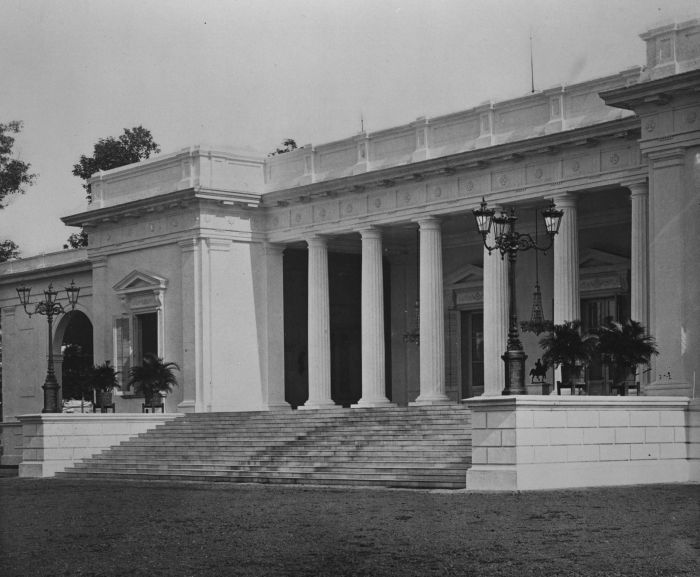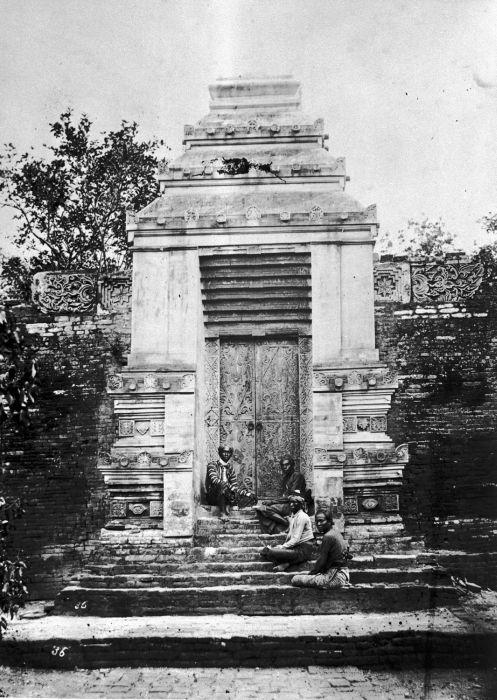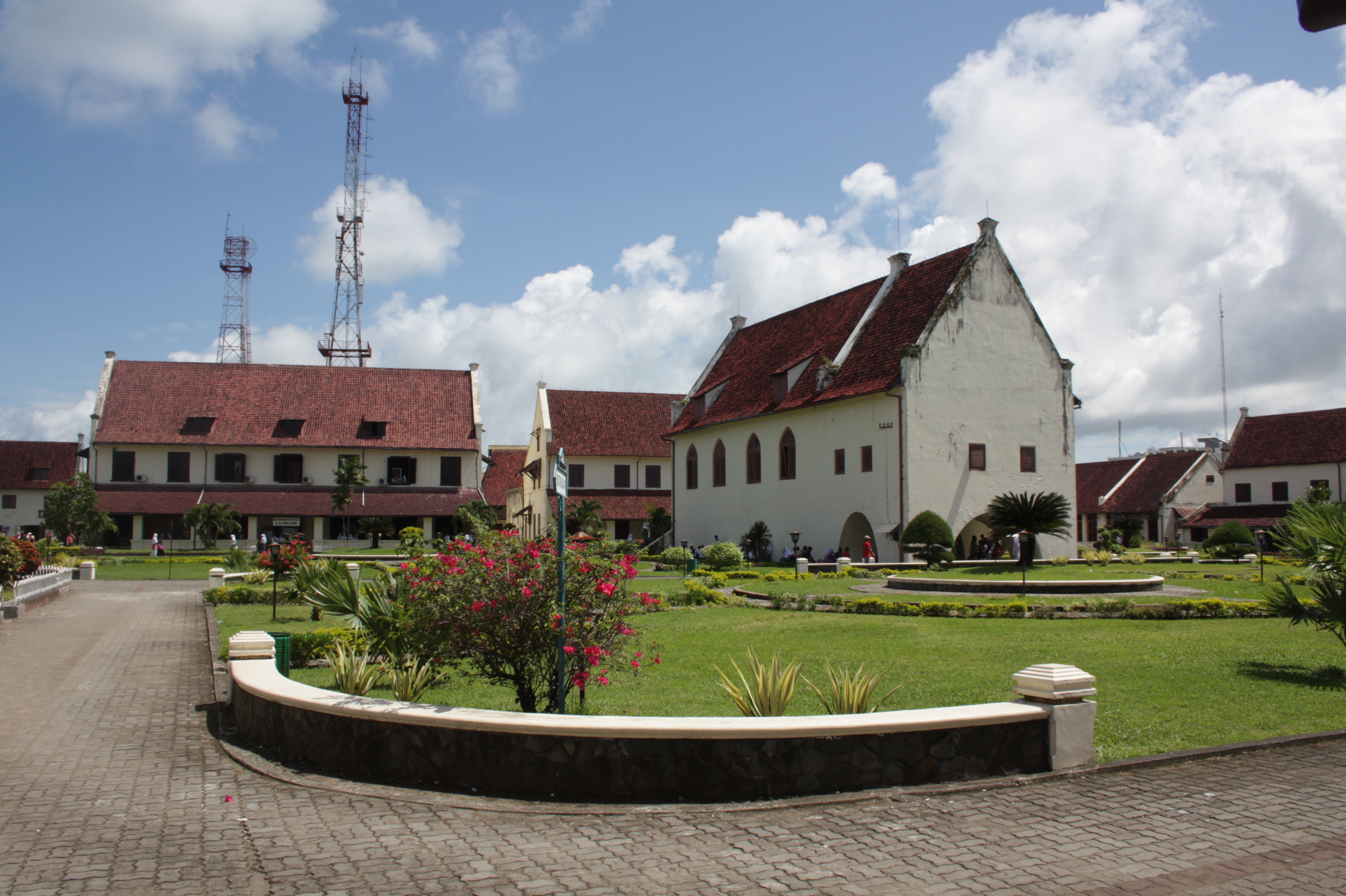|
Cornelis Speelman
Cornelis Janszoon Speelman (2 March 1628 – 11 January 1684) was Governor-General of the Dutch East Indies from 1681 to 1684. Cornelis Janszoon Speelman was the son of a Rotterdam merchant. He was born on 2 March 1628. In his 16th year, he left aboard the ''Hillegersberg'' for the Indies. He was employed as an assistant (') in the service of the Dutch East India Company (VOC). Biography In 1645 he arrived in Batavia, Dutch East Indies. He became bookkeeper (''boekhouder'') in 1648 and underbuyer (''onderkoopman'') in 1649. He became secretary (''secretaris'') to the Dutch Council of the Indies (''Raad van Indië''). He travelled with ambassador Joan Cunaeus to Persia that year, and wrote an account of the voyage. They were received by the Shah Abbas II with great festivity. Even before his voyage came to an end, in 1652 he was promoted to buyer (''koopman''). On his return to Batavia, he took up a post in the office of the bookkeeper-general (''boekhouder-generaal''), for w ... [...More Info...] [...Related Items...] OR: [Wikipedia] [Google] [Baidu] |
Governor-General Of The Dutch East Indies
The governor-general of the Dutch East Indies ( nl, gouverneur-generaal van Nederlands Indië) represented Dutch rule in the Dutch East Indies between 1610 and Dutch recognition of the independence of Indonesia in 1949. Occupied by Japanese forces between 1942 and 1945, followed by the Indonesian National Revolution until 1949. Indonesia proclaimed its independence on 17 August 1945. History The first governors-general were appointed by the Dutch East India Company (VOC). After the VOC was formally dissolved in 1800, the territorial possessions of the VOC were nationalised under the Dutch government as the Dutch East Indies, a colony of the Netherlands. Governors-general were now appointed by either the Dutch monarch or the Dutch government. During the Dutch East Indies era most governors-general were expatriate Dutchmen, while during the earlier VOC era most governors-general became settlers who stayed and died in the East Indies. Under the period of British control (1811 ... [...More Info...] [...Related Items...] OR: [Wikipedia] [Google] [Baidu] |
Dutch Coromandel
Coromandel was a governorate of the Dutch East India Company on the coasts of the Coromandel region from 1610, until the company's liquidation in 1798. Dutch presence in the region began with the capture of Pulicat from the Portuguese in Goa and Bombay-Bassein. Coromandel remained a colony of the Kingdom of the Netherlands until 1825, when it was relinquished to the British according to the Anglo-Dutch Treaty of 1824. It was part of what is today called Dutch India.De VOC site �Coromandel/ref> History In 1606, a Dutch ship stopped on the shores of the Karimanal Village near Pulicat, north of the mouth of the lake requesting water.Pandian p.131 Local Muslims offered food and help to the Dutch. They struck a trade partnership to procure and supply local merchandise to the Dutch for trade in the East Indies. Empress Eraivi, a wife of Emperor Venkata II of Vijayanagara, ruled ''Prelaya Kaveri'' and during her reign in 1608 the Dutch East India Company was given permission to ... [...More Info...] [...Related Items...] OR: [Wikipedia] [Google] [Baidu] |
Trunajaya Rebellion
The Trunajaya rebellion (also spelled Trunojoyo; id, Pemberontakan Trunajaya) or Trunajaya War was the ultimately unsuccessful rebellion waged by the Madurese prince Trunajaya and fighters from Makassar against the Mataram Sultanate and its Dutch East India Company (VOC) supporters in Java (in modern-day Indonesia) during the 1670s. The rebellion was initially successful: the rebels defeated the royal army at Gegodog (1676), captured most of the Javanese north coast, and took the Mataram capital Plered (1677). King Amangkurat I died during the retreat of the royal court. His son and successor, Amangkurat II, requested help from the VOC in exchange for financial remuneration and geopolitical concessions. The VOC's subsequent involvement turned the tide of the war. VOC and Mataram forces expelled Trunajaya from Surabaya, recovered lost territories and overran his new capital at Kediri (1678). However, the rebellion continued until the capture of Trunajaya at the end of 167 ... [...More Info...] [...Related Items...] OR: [Wikipedia] [Google] [Baidu] |
Mataram Sultanate
The Sultanate of Mataram () was the last major independent Javanese kingdom on the island of Java before it was colonised by the Dutch. It was the dominant political force radiating from the interior of Central Java from the late 16th century until the beginning of the 18th century. Mataram reached its peak of power during the reign of Sultan Agung Anyokrokusumo (), and began to decline after his death in 1645. By the mid-18th century, Mataram lost both power and territory to the Dutch East India Company (Dutch: ''Vereenigde Oost-Indische Compagnie''; ''VOC''). It had become a vassal state of the company by 1749. Etymology The name ''Mataram'' itself was never the official name of any polity, as the Javanese often refer to their realm simply as ''Bhumi Jawa'' or ''Tanah Jawi'' ("Land of Java"). ''Mataram'' refers to the historical areas of plains south of Mount Merapi around present-day Muntilan, Sleman, Yogyakarta, and Prambanan. More precisely, it refers to the Kota Gede ... [...More Info...] [...Related Items...] OR: [Wikipedia] [Google] [Baidu] |
Java
Java (; id, Jawa, ; jv, ꦗꦮ; su, ) is one of the Greater Sunda Islands in Indonesia. It is bordered by the Indian Ocean to the south and the Java Sea to the north. With a population of 151.6 million people, Java is the world's List of islands by population, most populous island, home to approximately 56% of the Demographics of Indonesia, Indonesian population. Indonesia's capital city, Jakarta, is on Java's northwestern coast. Many of the best known events in Indonesian history took place on Java. It was the centre of powerful Hindu-Buddhist empires, the Islamic sultanates, and the core of the colonial Dutch East Indies. Java was also the center of the History of Indonesia, Indonesian struggle for independence during the 1930s and 1940s. Java dominates Indonesia politically, economically and culturally. Four of Indonesia's eight UNESCO world heritage sites are located in Java: Ujung Kulon National Park, Borobudur Temple, Prambanan Temple, and Sangiran Early Man Site. ... [...More Info...] [...Related Items...] OR: [Wikipedia] [Google] [Baidu] |
Ternate
Ternate is a city in the Indonesian province of North Maluku and an island in the Maluku Islands. It was the ''de facto'' provincial capital of North Maluku before Sofifi on the nearby coast of Halmahera became the capital in 2010. It is off the west coast of Halmahera, and is composed of eight islands: Ternate, the biggest and main island of the city, and Moti, Hiri, Tifure, Mayau, Makka, Mano, and Gurida. In total, the city has a land area of 162.17 square kilometres and had a total population of 185,705 according to the 2010 census, and 205,001 according to the 2020 census, with a density of 1,264 people per square kilometre. It is the biggest and most densely populated city in the province, is the economic, cultural, and education center of North Maluku, and acts as a hub to neighbouring regions. It was the capital of the Sultanate of Ternate in the 15th and 16th centuries, and fought against the Sultanate of Tidore over control of the spice trade in the Moluccas before becomin ... [...More Info...] [...Related Items...] OR: [Wikipedia] [Google] [Baidu] |
Banda Islands
The Banda Islands ( id, Kepulauan Banda) are a volcanic group of ten small volcanic islands in the Banda Sea, about south of Seram Island and about east of Java, and constitute an administrative district (''kecamatan'') within the Central Maluku Regency in the Indonesian province of Maluku. The islands rise out of deep ocean and have a total land area of approximately . They had a population of 18,544 at the 2010 Census and 20,924 at the 2020 Census. Until the mid-19th century the Banda Islands were the world's only source of the spices nutmeg and mace, produced from the nutmeg tree. The islands are also popular destinations for scuba diving and snorkeling. The main town and administrative centre is Bandanaira, located on the island of the same name. History Pre-European history The first documented human presence in the Banda Islands comes from a rock shelter site on Pulau Ay that was in use at least 8,000 years ago. The earliest mention of the Banda Islands are fou ... [...More Info...] [...Related Items...] OR: [Wikipedia] [Google] [Baidu] |
Ambon Island
Ambon Island is part of the Maluku Islands of Indonesia. The island has an area of and is mountainous, well watered, and fertile. Ambon Island consists of two territories: the city of Ambon, Maluku, Ambon to the south and various districts (''kecamatan'') of the Central Maluku Regency to the north. The main city and seaport is Ambon, Maluku, Ambon (with a 2020 Census population of 347,288), which is also the capital of Maluku (province), Maluku Provinces of Indonesia, province, while those districts of Maluku Tengah Regency situated on Ambon Island had a 2020 Census population of 128,069. Ambon has an Pattimura Airport, airport and is home to the Pattimura University and Open University (Universitas Terbuka), state universities, and a few private universities, which include Darussalam University (Universitas Darussalam, UNDAR) and Universitas Kristen Indonesia Maluku (UKIM). Geography Ambon Island lies off the southwest coast of the much larger Seram island. It is on the north ... [...More Info...] [...Related Items...] OR: [Wikipedia] [Google] [Baidu] |
Treaty Of Bongaja
{{Use mdy dates, date=April 2012 The Treaty of Bongaya (also spelled Bongaja) was signed on November 18, 1667 between Sultan Hasanudin of Gowa and the Dutch East India Company (VOC). This treaty was developed after Dutch imperial forces (allied with the Bugis) defeated the Gowan forces at Makassar Makassar (, mak, ᨆᨀᨔᨑ, Mangkasara’, ) is the capital of the Indonesian province of South Sulawesi. It is the largest city in the region of Eastern Indonesia and the country's fifth-largest urban center after Jakarta, Surabaya, Med .... Based on the terms of the agreement, Sultan Hasanudin officially recognized the VOC's influence in Indonesian territories (VOC recognition by the sultan was unofficially established in 1667). As a result, major restrictions were placed on Gowa's ability to trade. The treaty declared that all traders from Gowa required a license in order to do business in regions controlled by the Dutch East India Company. These territories included Buto ... [...More Info...] [...Related Items...] OR: [Wikipedia] [Google] [Baidu] |
Makassar
Makassar (, mak, ᨆᨀᨔᨑ, Mangkasara’, ) is the capital of the Indonesian province of South Sulawesi. It is the largest city in the region of Eastern Indonesia and the country's fifth-largest urban center after Jakarta, Surabaya, Medan, and Bandung.Ministry of Internal AffairsRegistration Book for Area Code and Data of 2013/ref> The city is located on the southwest coast of the island of Sulawesi, facing the Makassar Strait. Throughout its history, Makassar has been an important trading port, hosting the center of the Gowa Sultanate and a Portuguese naval base before its conquest by the Dutch East India Company in the 17th century. It remained an important port in the Dutch East Indies, serving Eastern Indonesian regions with Makassarese fishers going as far south as the Australian coast. For a brief period after Indonesian independence, Makassar became the capital of the State of East Indonesia, during which an uprising occurred. The city's area is , and it had ... [...More Info...] [...Related Items...] OR: [Wikipedia] [Google] [Baidu] |
Admiral
Admiral is one of the highest ranks in some navies. In the Commonwealth nations and the United States, a "full" admiral is equivalent to a "full" general in the army or the air force, and is above vice admiral and below admiral of the fleet, or fleet admiral. Etymology The word in Middle English comes from Anglo-French , "commander", from Medieval Latin , . These evolved from the Arabic () – (), “king, prince, chief, leader, nobleman, lord, a governor, commander, or person who rules over a number of people,” and (), the Arabic article answering to “the.” In Arabic, admiral is also represented as (), where () means the sea. The 1818 edition of Samuel Johnson's '' A Dictionary of the English Language'', edited and revised by the Rev. Henry John Todd, states that the term “has been traced to the Arab. emir or amir, lord or commander, and the Gr. , the sea, q. d. ''prince of the sea''. The word is written both with and without the d, in other languages, as we ... [...More Info...] [...Related Items...] OR: [Wikipedia] [Google] [Baidu] |






_toont_Zuidoost-Molukse_kleding_en_gebruiken_TMnr_20017958.jpg)
